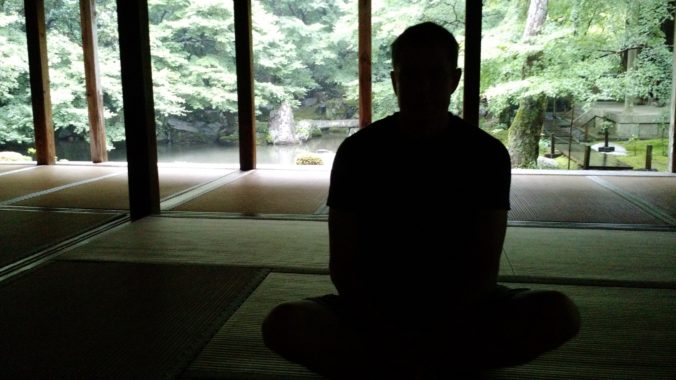I started meditating last year, and it completely changed my life. I’ve always had a nagging inner voice built off my fear and insecurity. It’s completely gone now, and I’m in control. I’m no longer a victim of my emotions, and no longer have episodes of anxiety or depression. I sleep more soundly, I’m more productive, I have better relationships, I manage stress better, and I’m more focused. All of this because I’ve learned to train my brain.
In today’s digital age, we live in a noisy world that’s full of distractions. Our brains are constantly in overdrive. Even worse, we get addicted to the need for distraction, and are constantly checking our phone for a “like” or status update that makes us feel good. This isn’t healthy.
Meditation trains your brain to take a break, calm down, and ignore the noise. You learn to observe your thoughts and emotions, without having to react to them right away. For me it has had two profound effects. First, my brain is clearer and more focused, and I’m able to prioritize and be more productive. Second, I’m no longer a slave to my emotions. I can recognize a negative feeling right away, and take a step back without having to respond. This keeps me from having a knee-jerk reaction, and often helps me identify and solve the root cause of discomfort.
What is Meditation?
Meditation is like exercise for the brain. By making it a simple habit, you can make your brain more resilient and stronger. It can also come in handy to release off some mental steam when you’re feeling stressed.
Meditation has been around for millenia, with written records dating back to 1500 BC. It’s developed from a Hindu / Buddhist practice into a powerful personal productivity trend that’s caught on with many successful entrepreneurs and executives.
There are many ways to practice it, but it’s basically an exercise to focus on your breath, clear your brain, and be present. You may have thoughts and feelings that come to mind, and you practice acknowledging them and letting them go.
How To Meditate
It’s much easier to start meditating than you think, with guided instructions that will talk you through it. All it takes is 3-10 minutes, and a free app on your phone.
Step 1: Download a Guided Meditation App
I’ve tried many guided meditation apps, and I have two favorites. I like the voice of Meditation & Relaxation: Guided Meditation (Android, Apple) and the variety of exercises. I’ve also tried Headspace: Meditation & Sleep (Android, Apple) which has a lot of different exercise themes, but the paid version is expensive and it gets repetitive. Both have excellent free courses that will teach you how to get started, and I suggest that you try both of them. If you’re not sure which to try, Meditation & Relaxation has a female voice, and Headspace has a male voice with a British accent. Pick whichever sounds more appealing 🙂
Step 2: Meditate
Next you need to find a time and place to practice your meditation where you won’t be interrupted. Perhaps locking your office door, in bed in the morning, or on the sofa after everyone has gone to bed. You don’t need the perfect place or the perfect posture, you just need somewhere that you’ll be comfortable and left alone.
Step 3: Make it a Habit
Once you’ve tried a few times, you should seek to make meditation a habit. I suggest to give yourself a 30-day challenge and see if you can do it (almost) every day! You can use an app like Habit Bull (Android / Apple) to track your progress. See my article on The Easy Way to Build a New Habit.
Ideally you should look for a time when you can make it a habit. This will vary depending on your schedule, but it might be first thing in the morning, in the afternoon, or right before bed. For me, I developed a habit of doing it in bed first thing in the morning, so that I could start my day off with intention.
Lastly, remember that meditation is about progress, not perfection. You will have days when you can’t focus, and that’s OK. It’s still better to practice than to skip it.
